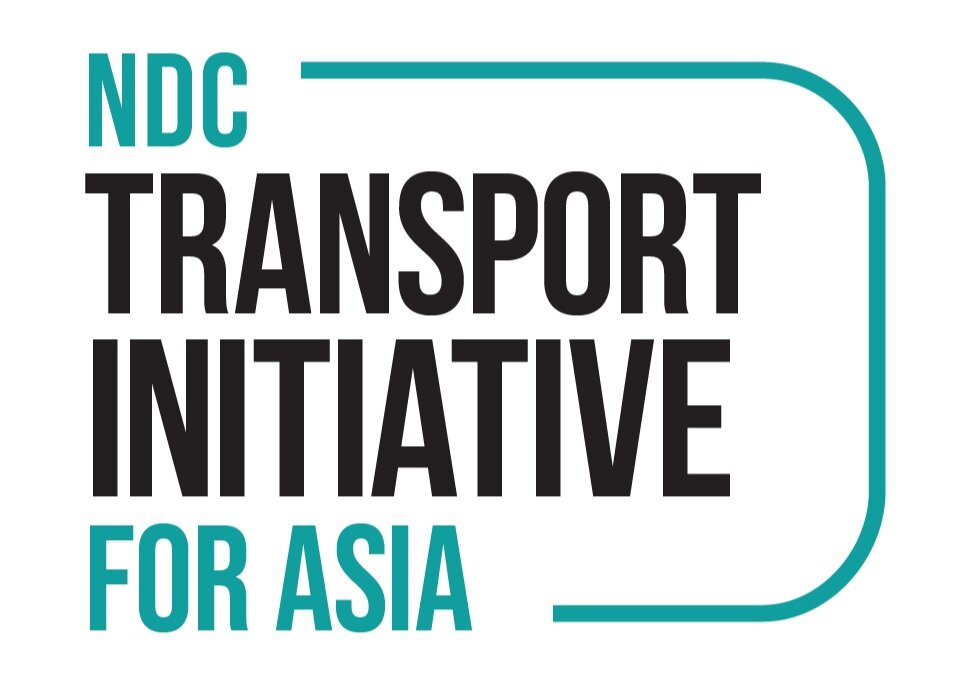BLOG: A Greener, Cleaner, and Better Vietnam Through Transport Decarbonization
This is the third in series of articles documenting lessons learned across NDC-TIA country activities, to be published throughout 2022.
〰️
This is the third in series of articles documenting lessons learned across NDC-TIA country activities, to be published throughout 2022. 〰️
In Vietnam, a country home to 97 million inhabitants, there are 65 million registered motorcycles and mopeds, 1.5 million cars and 1 million trucks. Due to rapid economic growth, the country has seen a steep increase in vehicle ownership: from 2014 to 2018, passenger car and motorcycle registrations grew 15% and 9% a year, respectively. The unprecedented increase in motorized traffic has resulted in a range of issues: transport is responsible for 11% of national greenhouse gas (GHG) emissions, the sector is one of the largest sources of air pollution and 60,000 deaths can be attributed to polluted air every year.
Tại Việt Nam, một quốc gia với 97 triệu dân, có tới 65 triệu xe máy và xe gắn máy được đăng ký, 1,5 triệu xe ô tô và 1 triệu xe tải. Với tốc độ tăng trưởng kinh tế nhanh, số lượng chủ sở hữu phương tiện giao thông tại quốc gia này đã tăng vọt: kể từ năm 2014 đến năm 2018, lượng xe ô tô con và xe máy được đăng ký đã tăng lên tương ứng là 15%/năm và 9%/năm. Sự gia tăng chưa từng thấy của phương tiện giao thông cơ giới đã dẫn đến một loạt vấn đề: lượng phát thải khí nhà kính (KNK) từ giao thông vận tải chiếm tới 11% tổng lượng phát thải KNK quốc gia, ngành giao thông cũng là một trong những ngành gây ô nhiễm không khí lớn nhất và hằng năm có tới 60.000 ca tử vong được cho là do không khí bị ô nhiễm.
Vietnam is poised to change these staggering numbers. The country submitted its updated climate commitment, its Nationally Determined Contribution (NDC), in 2020, committing to cut GHG emissions between 9% with its domestic resources and 27% with international support by 2030, compared to business as usual. At COP26 in 2021, Vietnam announced its goal for net zero emissions by 2050. In July 2022, Vietnam entrenched its net-zero target into law. With Decision No.876/QD-TTg, a new national climate strategy was approved outlining the targets to lower GHG emissions by 44% by 2030 compared to business as usual, peak emissions by 2035 and reach net zero by mid-century. In November 2022, Vietnam released a new updated NDC, in which the unconditional contribution increased from 9% to 15.8% and conditional contribution increased from 27% to 43.5%.
Việt Nam đã sẵn sàng hành động để thay đổi những con số đáng lo ngại này. Việt Nam đã đệ trình bản cập nhật cam kết khí hậu của quốc gia. Trong Đóng góp do quốc gia tự quyết định (NDC) năm 2020, Việt Nam cam kết đến năm 2030, với nguồn lực trong nước, sẽ giảm 9% tổng lượng phát thải khí nhà kính so với kịch bản phát triển thông thường và tăng mức giảm phát thải lên tới 27% khi có hỗ trợ quốc tế. Tại Hội nghị COP26 năm 2021, Việt Nam công bố mục tiêu đạt phát thải ròng bằng không vào năm 2050. Vào tháng 7 năm 2022, Việt Nam đã khẳng định mục tiêu đạt phát thải ròng bằng không thông qua việc luật hóa nội dung này. Chiến lược khí hậu quốc gia mới đã được thông qua theo Quyết định số 876/QD-TTg, trong đó vạch ra các mục tiêu giảm phát thải KNK lên tới 44% so với kịch bản phát triển thông thường vào năm 2030, phát thải KNK đạt đỉnh vào năm 2035 và đạt mức phát thải ròng bằng không vào giữa thế kỷ này. Vào tháng 11 năm 2022, Việt Nam công bố NDC được cập nhật mới, theo đó, mức đóng góp giảm phát thải không điều kiện tăng từ 9% lên 15,8% và mức đóng góp giảm phát thải có điều kiện tăng từ 27% lên 43,5%.
-
The NDC Transport Initiative for Asia (NDC-TIA), supported by the German Federal Ministry for Economic Affairs and Climate Action (BMWK)through its International Climate Initiative, is working to help Vietnam reach its net-zero target. It supports Vietnam’s Ministry of Transport in developing a policy framework for electric mobility; implementing a digital monitoring, reporting and verification system in transport; facilitating fuel economy regulations; and developing scenarios for policy guidance to achieve net zero transport by 2050.
-
Dự án Sáng kiến giao thông trong NDC tại các nước châu Á (NDC-TIA), được tài trợ bởi Bộ Kinh tế và Bảo vệ khí hậu của Cộng hòa Liên bang Đức (BMWK) thông qua Sáng kiến Khí hậu Quốc tế, đang nỗ lực giúp đỡ Việt Nam đạt được mục tiêu phát thải ròng bằng không. Dự án sẽ hỗ trợ Bộ Giao thông Vận tải Việt Nam trong việc xây dựng khung chính sách cho giao thông điện, triển khai hệ thống kỹ thuật số phục vụ giám sát, báo cáo và xác minh trong ngành giao thông vận tải, tạo điều kiện thuận lợi cho các quy định về tiết kiệm nhiên liệu và xây dựng các kịch bản hướng dẫn chính sách để đạt được phát thải ròng bằng không trong ngành giao thông vận tải vào năm 2050.
Based on interviews with NDC-TIA partners – World Resources Institute (WRI), Deutsche Gesellschaft für Internationale Zusammenarbeit (GIZ), the International Council on Clean Transportation (ICCT), Agora Verkehrswende and SLOCAT Partnership – we have distilled four key ideas to advance Vietnam’s NDC and prepare for a transformation in transport.
Thông qua các cuộc phỏng vấn với các đối tác của dự án NDC-TIA, Viện Tài nguyên Thế giới (WRI), Tổ chức Hợp tác Phát triển Đức (GIZ), Hội đồng Quốc tế về Giao thông Sạch (ICCT), Agora Verkehrswende và Sáng kiến Đối tác giao thông bền vững, các bon thấp (SLOCAT Partnership), chúng tôi đã tổng hợp và rút ra bốn ý tưởng chính để thúc đẩy NDC của Việt Nam và chuẩn bị cho sự chuyển dịch trong ngành giao thông vận tải.
Full Vietnamese version: đọc nó bằng tiếng Việt
Align Visions for Zero-Emission Transport
To successfully use policy changes to decarbonize transport, it is imperative that there alignment of vision and collective efforts to ensure support and effective execution at all levels. Upon the approval of the national climate strategy, the follow-up Action Programme on Green Energy Transformation shows clear steps to reduce carbon and methane emissions from transport, underpinned by specific targets across transport modes: having 100% of buses powered by electricity and green energy by 2025; phasing out the production, assembly and import of vehicles using fossil fuels by 2040; and developing a “complete green transport network” that includes all modes by 2050.
Recognizing the role of transport in mitigating the impacts of climate change, Vietnam’s Ministry of Transport is collaborating with other ministries to integrate transport into national strategies and action plans. For example, the National Green Growth Strategy for 2021-2030 highlights transport mitigation and adaptation actions, calls for investment for green transport infrastructure, and prioritizes e-mobility solutions. The NDC-TIA is working with the Ministry of Transport to develop and implement its monitoring, reporting and verification system to track the progress of climate change mitigation actions. To build capacities on climate change for transport officials, GIZ conducted training workshops to identify and prioritize transport actions for reducing GHG emissions.
“In line with the national government’s vision, there is an increasing awareness and focus on e-mobility at the local level.”
In line with the national government’s vision, there is an increasing awareness and focus on e-mobility at the local level. Ho Chi Minh City, selected as an NDC-TIA pilot city, will launch its first-ever e-mobility roadmap in December 2022 year. To assist the city in charting the path forward, WRI, with the support from GIZ, has conducted cost benefit analyses for various types of electric vehicles, including cars, two-wheelers, taxis and buses, examined the energy demand for mass electrification and provided tailored recommendations to the city. The preliminary analyses finds that each new electric vehicle may generate $750 (18 million VND) per annum in net benefits from 2025 to 2050 in Ho Chi Minh City, and the highest contribution to emissions reduction is related to cars and public transport. This can inform future policy decisions and help scale up solutions to other cities.
Drive Change Through a Systems Approach
The complexity of decarbonization requires a joined-up government taking a systems approach as well evidence to inform decisions and drive the right change. The NDC-TIA’s work has supported the Ministry of Transport in collaborating with domestic and international partners to develop e-mobility roadmaps and action plans. In the midst of the COVID-19 pandemic, the project kick-off workshop in 2021 still brought more than 80 representatives together from the government, private sector and development organizations. Through small coordination meetings, GIZ engaged government officials across the Ministry of Transport, Ministry of Planning and Investment, Ministry of Finance, and Ministry of Industry and Trade to deliberate e-mobility development and to enhance knowledge and awareness. As such, the NDC-TIA’s work helps to ensure the transition to e-mobility in Vietnam is not managed in isolation from other urban policies, but as a unifying agenda across public authorities and by reaching beyond transport planning into other issues of energy, climate change, health, job creation and social equity.
“The NDC-TIA’s work helps to ensure the transition to e-mobility in Vietnam is not managed in isolation from other urban policies, but as a unifying agenda across energy, climate change, health, job creation and social equity.”
To provide practical experience to Vietnam in preparing for a clean mobility future, the NDC-TIA has collated international best-practice examples on e-mobility roadmaps, conducted assessment on challenges and opportunities for electrification, organized a European study tour and developed workshops with e-mobility experts. These activities have helped government stakeholders understand what needs to be done, i.e., specific roadmaps and regulatory frameworks needed to create a zero-emission mobility system, as well as how to get it done, i.e., resources and investments required to decarbonize transport efficiently and effectively.
Prioritize the Electrification of Two-Wheelers and Public Buses
Two-wheelers, including motorcycles and mopeds, make up over 90% of motorized vehicles in Vietnam and the majority of the fleet is internal combustion engine vehicles. But the decarbonization of the fleet has begun: there were 1.35 million electric two-wheelers plying the roads as of June 2020 and sales increased significantly from 2019 to 2020, from 5% of the market to 8%. And Vinfast – the domestic automaker under Vietnam’s biggest conglomerate Vingroup – has established a network of battery swapping and renting stations for electric two-wheelers in many cities.
“The NDC-TIA is providing detailed analysis to help inform government policies to electrify motorcycles and mopeds and working to support high-quality public transport in Vietnam.”
To inform the government in crafting policies to accelerate this transition, ICCT has conducted detailed analysis and developed a baseline of fuel consumption of the fleet. This analysis can help set fuel economy regulations and reduce emission from existing vehicles.
NDC-TIA is also working to support high-quality public transport. Driven by innovations in the private sector coupled with government’s efforts to promote sustainable transport, the electric bus market in Vietnam has seen gradual movement. VinBus will deploy 150 to 200 e-buses in Hanoi, Ho Chi Minh City and Phu Quoc. Ho Chi Minh City is now piloting e-buses on five routes and provides subsides to the operator during a 24-month pilot phase. GIZ has supported Hanoi and Ho Chi Minh City in developing finance mechanisms for e-bus adoption and is planning to engage development banks to mobilize new resources.
What’s Next?
A decarbonized and green transport network does not simply mean changing how we power road vehicles. Rather, it means better use of limited road space for all users and more mobility options.
Taming the growth of emissions requires a comprehensive policy package that provides the right incentive and generates investments in low-carbon transport solutions. As Vietnam’s economy grows, its Transport Infrastructure Master Plan, estimated to cost $65 billion, aims to shore up its national infrastructure including roads, railways and ports and airports. Its Railway Transport Development Strategy has also set out concrete plans for an extensive railway network by 2030. And Vietnam’s Inland Waterway Infrastructure Master Plan calls for more connected waterway and provides incentives for private companies to tap the potential of sustainable freight transport.
“Together with the NDC-TIA and other international support, Vietnam could leapfrog to sustainable, low carbon transport, and the time to act is now.”
As world leaders look to take the next step on climate commitments after COP27, Vietnam can point to sustained political will, enhanced ambitions, and immediate actions on transport decarbonization. But more can be done. Vietnam has committed to cutting emissions 15.8% before 2030 with domestic resources. But with international support, Vietnam estimates it can increase those cuts to 43.5% from the baseline scenario.
This blogpost is also published on TheCityFix under Energy + Climate Change on November 28, 2022.
Author: Yiqian Zhang.
Contributions provided by Stephanie Ly (WRI), Ly Dang Tuyet and Urda Eichhorst (GIZ), Francisco Posada (ICCT), Angel Cortez and Nikola Medimorec (SLOCAT), and Ernst Benedikt Riehle (Agora). Interview support provided by Yifan Ding and Yaya Liu (WRI). Vietnamese translation provided by CTM Connect.
Cover photo by Nguyen Anh Tuan (GIZ). Other photos from Tron Le, Trinity Treft, Dylan Lu, and Sandip Roy via Unsplash.




